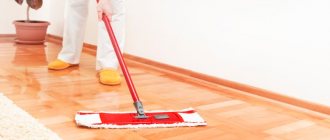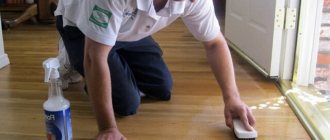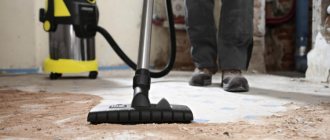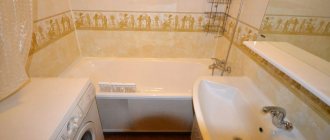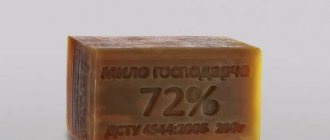No precautions can protect window structures from dust and other contaminants during repairs. For protection, paper blinds, film and tape are usually used. But drops of paint, glue, polyurethane foam and simply dust inexplicably penetrate onto the protected surfaces. Moreover, traces of tape will also have to be eliminated. Having cleared the room of construction debris and dirt, you need to begin the final procedure after the renovation - wash the windows. And here problems can arise, since not all types of contaminants can be removed easily and simply. Therefore, each problem should be dealt with separately.
Important Rules
Many housewives believe that the window will remain clean longer if the protective film is not touched until it begins to come off on its own.
This is the deepest misconception. Much more dust will accumulate under the adhesive tape, and together with the adhesive substance it will create very strong contamination. Therefore, immediately after installation, PVC windows must be freed from all protective elements not only on the glass, but also on the frames and window sills.
After installation, experts advise cleaning the windows after two to three weeks. The choice of a suitable arsenal of laundering tools is of no small importance. Therefore, it is worth adhering to several rules when solving the problem of how to clean plastic windows.
- It is not recommended to use abrasives, as well as hard hard brushes or sponges. Chemical compounds can also damage the surface of plastic because they corrode the material.
- We clean glass with special products that are sold in hardware and construction stores. If there is no glass cleaner in the house at the time of washing, you can replace it with dishwashing liquid or a self-prepared soap solution.
- The best option from available means is a soft cloth that will not leave streaks or scratches on the surface.
- In order not to worry about the question of how to wash the glass and window sills of plastic windows, it is recommended to carry out general cleaning twice a year - at the beginning of autumn and at the end of winter.
How to wash various types of dirt from plastic windows?
It is not easy to clean plastic windows after repairs, since various types of contaminants remain on them: remnants of polyurethane foam, paint, plaster, putty. It is important to remove all these elements without scratching the surface or changing the color of the plastic. To wash plastic windows after repair, certain materials and tools are required:
- Glass scraper. An ordinary spatula or knife will not work for cleaning - such tools leave scratches on the surface.
- Microfiber cloths. You can also use folk remedies - nylon tights, newspapers, paper towels.
- A hard sponge - in combination with a cleaning agent, it will perfectly clean the frames.
- Vacuum cleaner. With its help, you can clean the window mechanism from the dust that invariably accumulates during repairs.
If the windows were covered with film before repairs, you should first moisten it with hot water and only then remove it. Read more about how to remove film from plastic windows here. Basic stains can be removed with plain water. To do this, you need to wet the glass and then use a scraper to collect the water along with the dirt. A soap solution is also effective - to avoid streaks, it must be washed off with clean water and then polished the surface. You need to wash the glass and frames first, and then proceed to the window sill. Glasses should be washed from the inside first. The ebb tide is washed last. If there is any foam left on the windows, it must be carefully removed mechanically. You can also use a spatula for this, but it may leave scratches. Traces of paint or tape are usually washed off with a solvent - you can buy it at any hardware or hardware store.
When cleaning, it is important to avoid getting any products on the window seal. It is made of rubber and provides an airtight seal to the window. Aggressive components destroy this material, and therefore harm the entire window structure. When choosing cleaning products, it is important to read the label - they must be intended for PVC, otherwise the components may corrode the material or cause its color to change. When using aggressive cleaning agents to clean plastic windows, cleaning must be done with rubber gloves. For maximum safety, you can also wear a mask. You should start cleaning plastic windows immediately after completing the repairs. The longer you delay cleaning, the more dirt gets absorbed into the surface. Fresh marks after repair work can often be washed off without much effort or the use of special products. You can wash plastic windows after repair using both ready-made household products and some folk tricks.
Homemade Cleaning Products
External factors often contribute to the appearance of yellowness or gray spots. This includes exposure to sunlight, changes in temperature, or simply changes in the structure of impurities added to the plastic.
All these unpleasant marks can be easily cleaned with home remedies:
- A stubborn stain can be removed with regular alcohol. It dissolves the top layer of PVC along with dirt. But this must be done carefully so as not to spoil the window sill;
- A homemade mixture of equal parts washing powder and soda can easily wash away greasy stains and whiten yellow areas;
- Laundry soap has a good effect. With the help of a brush and soap foam, any dirt can be easily removed, even traces of cement or plaster after repair;
- A hygiene product such as toothpaste with a brush will help scrub the window sill, in addition to removing many bacteria.
These simple tools, available in every housewife, will help keep PVC window sills clean.
Industrial cleaning products
For people who do not trust home remedies, manufacturers of household chemicals offer various cleaning pastes, solutions and powders. But they can be no less dangerous for plastic if used unreasonably, plus cause allergic irritations to the skin of the hands.
The most popular means that can be used to clean PVC window sills are the following:
- if used frequently, it is better to use “Mr. Proper." Afterwards, there is no need to rinse the window sill with copious amounts of water;
- In the kitchen, Frosch will help clean the window sills from dirt. It does not cause allergies, but it will not cope with stubborn stains;
- sprays produced under the Help brand have deep penetration. They are able to whiten even yellow, faded areas of the surface.
Sometimes housewives try to clean very dirty surfaces with powders intended for the care of hobs. Yes, they are effective, but before you wash the window sill with powder, you need to make sure that it does not contain abrasive substances. Solid particles will leave a lot of scratches, ruining the appearance.
Store-bought care products for PVC frames
You can clean the PVC frame with the same “Mr. Proper" or similar products used for window sills. However, this list can be expanded a little:
- Domestos gel, specially developed for toilets and baths, can whiten yellowed frames;
- The basis of Pemolux cream is soda. It is safe for PVC surfaces and can easily clean stubborn dirt after repair;
- It is good to wash off grease from kitchen frames with Comet gel. When used, it is diluted at the rate of 60 ml of the drug per 5 liters of water;
- Mr Muscle cream will help whiten frames. The preparation is rubbed onto the PVC surface and washed off with a wet sponge after 3 minutes.
When using any chemical, you must remember safety precautions and use personal protective equipment.
Folk remedies for caring for PVC frames
You can clean PVC frames at home, as well as window sills, using folk remedies. Let's look at the two most popular recipes:
- Equal proportions of chalk and tooth powder are diluted with water to form a paste. This mixture is applied to a dirty surface and after drying, simply wiped with a dry soft cloth.
- To remove a stubborn stain, sprinkle it with baking soda and immediately rub it with a sponge soaked in vinegar. The reaction that occurs will clear out the dirt, after which the frame must be washed with clean water.
Choosing the Right Cleaner
As noted above, you need to buy a product that does not contain small abrasives and includes a minimum of chemically harmful substances. There are two principles to follow.
1. The solution must be liquid or gel-like. This can be either a composition for washing glass or cleaning glass hobs. An alternative is dishwashing liquid.
2. The solution can be made independently at home. There are three options here:
- dilute 2 tablespoons of potato starch in one liter of water;
- dilute one glass of table vinegar (9%) in one liter of water;
- Dilute two tablespoons of ammonia in one liter of water.
However, home remedies are not as effective as store-bought ones. With them, the window cleaning process will take a little longer, but it will be much safer.
What to remember
- Cleaning window frames after repair takes place in 2 stages: first, traces of building materials are removed, then finishing is carried out.
- You can clean windows using ready-made and improvised products: household chemicals, nail polish, table vinegar, ammonia, laundry soap.
- There are special devices for washing windows. They make cleaning convenient and safe.
- Clean glass is streak-free glass . To avoid divorces, you need to follow certain rules.
Video: how to clean windows and glass from cement and plaster
How to clean plastic windows from dirt?
Dirt on outside windows most often appears after rain. It gets not only on the surface of the glass, but also inside the frame if the window was open or with a broken seal. Additional sources of dirt are also fingerprints and the consequences of repairs. Therefore, when washing windows, it is important to pay attention to all its elements.
- First of all, start working with the window frames. Pay close attention to both the inside and outside. Remove all visible dirt with a damp cloth. After this, treat the surface with soapy water. It will perfectly clean windows from yellowness. Then move on to PVC double-glazed windows.
- Double-glazed windows. First, just as with frames, remove visible dirt and dust with a damp cloth. You won't need detergent at this stage. After removing the layer of dust, begin cleaning the glass by soaking a cloth in a cleaning solution or spraying a cleaning spray on them. Glass cleaning is carried out from the top to the bottom.
A lot of dust collects near the joints, so not a single centimeter of the glass surface should be missed.
Soap suds on the outside of the glass can be washed off with water supplied from a hose or a special device for washing cars. Water should be poured from above.
After cleaning the main surface, use a dry cloth to wipe all joints to remove excess moisture.
The final stage will be polishing the glass with special products containing alcohol (“Master Glitter”, “Mr. Muscle”, etc.). The optimal auxiliary material is a microfiber cloth.
There are several ways to wash a plastic window sill.
- A solution of soap and water will help if the stains are fresh. To prepare it, you need to grate laundry soap (1/3 of a bar) and dissolve it in one liter of warm water. A sponge soaked in this product cleans the surface well.
- Dishwashing detergent will clean the surface better, but it will also be more difficult to wash off.
- A special cleaning powder designed for laminated surfaces will help if the window sill has yellowed. A handy tool can be an old toothbrush or the back of a dish sponge.
At the final stage, wipe the cleaned window sill with a rag soaked in table vinegar. It will remove soap residue and its odor, providing additional protection against annoying insects.
Don't ignore products sold for cleaning kitchen surfaces and cleaning bathrooms. They will not only wash away heavy dirt, but also remove yellowed stains, and also help clean the window sill from soot and soot.
Wash the window sill with the obligatory removal of all plugs and after removing the main layer of dust and dirt.
After the main washing, you need to take care of the PVC window fittings. The most important element is the seal, which should be treated with silicone grease twice a year after each general washing of the products. You should do the same with the handles, just use machine oil.
Wise advice
- Solvents not intended for PVC may damage the frame as they contain acid. Therefore, it is recommended to use them with extreme caution.
- When cleaning windows with solvent, you must wear rubber gloves and protect your eyes.
- Care must be taken to ensure that the cleaning agent does not come into contact with the rubber. Since it may deteriorate and the seal of the window will be compromised. In some cases, the problem may not have a solution, since most designs are made with built-in rubber, and it is not possible to replace it.
- To wash off residues from construction putties, it is recommended to use a product that removes cement-lime dirt. You can buy it in every supermarket that sells building mixtures for renovation.
First, wash the frames. We start the process at the top and gradually move down. Use a clean new sponge (its hard side) to wash the frame; if it is heavily soiled, you can use a cleaning cream. Then use a damp cloth to wipe away any traces of cleaning agent and dirt.
You can use a homemade product to wash frames. Make a warm solution of ammonia in water (20 ml of ammonia per 1 liter of water) and wash the frames. We clean hard-to-reach places with a soft-bristled brush. You can use an old toothbrush.
We wash wooden frames with soapy water and then wipe them dry with a soft cloth made of natural material.
The white plastic profile is afraid of contact with various chemical compounds , even such as ordinary dishwashing detergent, so it is recommended to wash such frames with a solution of laundry soap in water.
How to clean plastic windows after repair?
After completing the repair, you will see that a lot of dirt of various types has appeared on the windows. They will occur even despite the precautions taken. No matter how you cover the window sills or hang the double-glazed windows, drips from paint, adhering foam, or splashes from primer cannot be avoided one way or another.
Don't panic, because with the methods below you can remove even the most severe stains.
1. Paint. You need to wash off paint from PVC windows as soon as its first drops hit the plastic or glass. Then you will not have to resort to auxiliary means, and the paint will be removed with a damp cloth. If you didn’t realize it in time, then you’ll have to use one of the following proven methods.
- Sunflower oil. Apply it liberally to the stains and leave for some time until the paint is completely dissolved.
- Special solvent. It is worth choosing it based on consultation with a specialist. He will suggest the most gentle remedy that will not harm the window surface.
- A soap solution can easily handle water-based paint.
2. The tape will be removed using the following methods.
- School eraser. They need to thoroughly rub the stained surface. The glue will roll off and can be wiped off with a dry cloth.
- Vegetable oil. You should proceed in the same way as in the case of paint.
- White Spirit. Cotton pads are soaked in it and traces of tape are wiped away.
Before you start coating the visible surface, test the mineral spirits on an inconspicuous area of your window.
3. Primer is the most dangerous material for PVC windows during repair work. This is due to its transparent color, which is difficult to notice until dry. After the substance hardens, unsightly gray spots appear on the window sill and frames. In this case, the following will help:
- warm water. The stain is generously moistened with it and left until completely softened. Then wipe with a rag;
- any liquid product for removing limescale in the bathroom. These substances can also be used to treat the surface of glass. Follow the instructions on the package;
- solvent. Last resort. It is used only when the previous methods did not cope with the task.
If the above methods do not help clean the windows, there is only one option left - paint them. Today, stores sell dyes intended for plastic surfaces. An alternative could be nitro enamel or aerosol paint for cars.
If you can't remove stains
It happens that some stain is too ingrained or old yellowness cannot be removed. In this case, you can save the window sill only by updating it a little.
We do not encourage you to do repairs at all. It is enough to purchase a white PVC film and carefully cover the window sill. The advantage of this method is that you can choose any color - even with a pattern. However, this does not mean that you need to stop washing the window sill and just re-stick the film from time to time.
A wide palette will allow you to update the window sill and refresh the interior. In addition, if you use our recommendations, then you will not need such drastic measures - the window sill will already look impeccable.
Household cleaning products for PVC windows
When washing plastic windows, different products should be used for glass and plastic elements (frames, slopes, window sills). Read more about how to wash a plastic window sill here. To clean plastic, you can use the following household products:
- Domestos. This product not only cleans, but also disinfects surfaces and also has a whitening effect. This product can cope with even quite stubborn stains. Simply apply the product to the surface, leave for a few minutes and rinse with plain water.
- Mr. Proper. This product is universal, so it is suitable for washing both glass and plastic surfaces. Small stains can be removed with a solution diluted in water, and in more complex cases, a concentrated composition is used.
- Intensive cleaner Fenosol. It is enough to apply it on a cotton napkin and wipe the surfaces. There is a whole set of this brand for window care, including separate products for: window profiles, rubber seals, fittings and window mechanisms.
- Karcher. This brand offers not only window cleaning products, but also special devices for this.
- Amway LOC This concentrated product is universal. This composition must be diluted depending on the degree of contamination. First, water is poured into the container, and only then the product is added there. There is also a special product for glass of the same brand.
- Another universal remedy is HG. The product is concentrated and must be diluted. If the contamination is very strong, then the composition does not need to be diluted. The product should be applied to the surface and left for a few minutes. Do not use this composition in direct sunlight. There is a special product for glass of the same brand - it comes in the form of a spray.
- Inexpensive glass cleaner – Help. It comes in a spray form and is very easy to use.
- iKeep. This brand has an all-purpose cleaner and a glass cleaning product. The first must be applied to the surface and left for a few minutes, then rinsed off with plain water. The window cleaner is sprayed and cleaning is done with a regular microfiber cloth or a substitute material.
Recommendations for selecting consumables
During operation, numerous methods have been developed for washing plastic windows using a variety of consumables, which are the most effective for removing contaminants. Washing plastic windows is greatly facilitated by using:
- convenient devices - mops with scrapers, rubber, fabric and foam pads;
- systems with glass watering and flat rubber nozzles for cleaning glass and plastic surfaces;
- napkins made of soft cotton fabrics - flannel, fleece, cotton - white to avoid the appearance of colored stains;
- ordinary newspapers used in everyday life, with which wet glass can be cleaned to perfect condition;
- old nylon tights, convenient for cleaning glass;
- paper towels and microfiber cloths, etc.
Attention: It is not recommended to use toilet paper for washing to avoid small wet pieces remaining on the glass.
Folk remedies for washing
There are many folk remedies that will help clean plastic windows after repair:
- If there are cement splashes left on the window, you can remove them with lemon. The citrus should be cut in half, and then rub the contaminated surface with these halves. After some time, the building mixture will dissolve and all that remains is to wipe the window with a damp cloth and polish it.
- Traces of building mixtures on windows can be removed with household chemicals designed to combat lime deposits on plumbing fixtures. You should use such products carefully so as not to damage the surface.
- Another remedy for cement is baking soda and vinegar. First, you need to apply acetic acid to the contaminated surface, and then treat it with soda sprinkled on a damp sponge or rag. Then you need to intensively wipe the surface, adding soda if necessary. Afterwards, the window must be rinsed with water and polished.
- You can also get rid of traces of cement using solvents. It is necessary to remove strong deposits of the mixture with a spatula, and then treat the remaining dirt with felt soaked in a solvent. After 10-15 minutes, the cement will soften, and its remains can be easily washed off.
- Remaining glue from glass can be removed with ammonia and dish soap. You need to mix both components in a 2:1 ratio, moisten a sponge in the resulting mixture and treat the contaminated surface. Apply the product several times until the glue softens. It can be removed with a hard sponge or rubber spatula.
- You can also get rid of traces of glue using vegetable oil. You need to moisten a cotton wool in it and wipe the contaminated areas. After an hour, the remaining glue will be easily removed.
- You can remove tape residue from windows with alcohol, solvent, or regular nail polish remover. You need to moisten a cotton wool in the chosen product and wipe the contaminated areas. Read more about how to wash tape and glue from it from glass here.
- You can get rid of traces of polyurethane foam using the pharmaceutical drug “Dimexide”. It must be applied for a few minutes to the remains of the construction product, and then the dirt must be removed with a hard sponge.
- If the surface is heavily stained with paint, you can deal with this using foil and an iron or a hair dryer. The foil must be placed on the contaminated surface and then heated. Under this influence, the paint softens and is easily removed.
- Small drops of paint can be removed with silicate glue. To do this, apply glue to the stains and leave until completely dry. The glue will begin to shrink, pulling out the paint.
- If the paint has not had time to dry, you can remove it with a soap solution. It should be applied liberally to the contaminated area and left, wetting periodically.
- Heavy stains can be removed with kerosene or gasoline. Both remedies are very aggressive, so they should be used when other methods have failed. You should first test the selected composition on a small area of the surface.
How to scrub building materials
Each building material - paint, primer, plaster - requires an individual approach. Here's how to clean them off.
Primer, glue.
Soak the stains with warm water and remove with a scraper. If that doesn't work, use white spirit, thinner 646, Cosmofen 10, or nail polish remover without acetone.
Plaster, putty.
Soak traces of mixtures with warm, almost hot water. Scrape off with a scraper. If gypsum mixtures do not lend themselves, replace the water with a vinegar solution. Special solvents will help with cement stains.
Polyurethane foam.
Remove most of it with a scraper. Soak the remaining stains with warm water or solvent and wipe with a hard sponge.
Paint.
Heat the stains with a powerful hairdryer and wipe off with a cloth.
Scotch.
Treat with warm, almost hot water, and then remove the film. Instead of water, steam from a steam generator will do.
Primers, adhesives and plasters eat into glass and plastic profiles, and even after cleaning, stains may remain. Take care of the windows in advance: cover them with film during finishing work, and cover them with masking tape. This way, building materials will not fall on the surface, and the windows will only have to be cleaned of dust.
Press your thumbs up and subscribe to the channel!
The sponsor of the publication is the manufacturer of window and door fittings SIEGENIA.
Reliable products of German quality - find SIEGENIA partners close to home.
Source
Methods for cleaning a plastic window after completion of repairs
Owners often think about how to clean a plastic window after renovation so that everything in the apartment is flawless. There are several methods.
Methods for cleaning a plastic window from concrete, putty and plaster
Important! Any stains that immediately get on the window are much easier to remove than to wash off the dirt that gets on the plastic window later.
Such substances include concrete, putty or plaster, which have hardened and are quite difficult to wash off from the profile and glass.
Here you can think about the question of how to wash building materials from a plastic window and how not to damage it.
Basically, building materials have the properties of soaking
Basically, building materials have the ability to get wet. Therefore, you need to wet the stains with water using a spray bottle or a rag, and after a while the treated areas will calmly move away from the surface of the window.
Sometimes it happens that water does not help, and then you need to carefully remove the stain with a blade.
Methods for cleaning a plastic window from polyurethane foam
Construction foam is quite difficult to remove from the surface, so it is necessary to ensure that the installers work carefully. If construction foam ends up on the profile, it is removed using a scraper or blade; there is an option to treat the area of contamination with a special solvent.
Methods for cleaning paint from a plastic window
Paint stains containing water are removed using a hairdryer set to a powerful setting. The hot air coming from the hair dryer will melt the paint and it can be easily removed with a rag.
Paint stains containing water are removed using a hairdryer set to a powerful setting.
However, there are paint compositions that can only be removed with nail polish without acetone.
Drops of paint can also be removed by gently scraping the surface with a blade.
Methods for cleaning a plastic window from tape
Important! To carefully remove the tape, you need to wet it with water using a sponge or treat it with steam from an iron.
If it was not possible to remove the tape efficiently, then special solvents or laundry soap will help.
Stage 1: removing traces of building materials
Cleaning window frames from dirt after repair is carried out in 2 stages. This is especially important for apartments in a new building.
| Method 1: remove the mounting foam with a spatula Carefully remove the build-up of frozen foam with a spatula so as not to scratch the frame. Remove the remaining foam with an acetone-based solvent. Process:
| |
| Method 2: wash the plaster with water Process:
| |
| Method 3: remove the glue with a hair dryer and spatula After removing the protective film, protective adhesive often remains on the frame. You can remove it with a hair dryer and a spatula. Process:
You can also remove the glue from the frames with a special cleaning agent “Cosmofen”, which can be bought in hardware stores. |
What chemicals can be used to clean plastic windows after renovation?
What is the best way to clean plastic windows, and what chemicals can be used? Will help with this:
- “Mr. Muscle” is an excellent product that fights stains and does not leave streaks on the glass when used correctly;
- if polyurethane foam gets on the profile, then “Phenozol” will come to the rescue;
- "Bref" copes well with this task;
- "Cosmofen 20" is suitable for washing various types of stains;
- "Cosmofen 10" and "Cosmofen 5" act as solvents for stains;
- “Penosil” is an excellent anti-pollution product, available in the form of a spray;
- solvent “646”, which will effortlessly remove paint, primer or other construction contaminants;
- "San Clean" is a good glass cleaner.
"Mr. Muscle" is an excellent product that fights stains and does not leave streaks on the glass when used correctly.
Cleaning the profile from dust
If the windows are new and the protective film with the manufacturer’s logos has not been removed from them, in most cases it is enough to remove the sticker and wipe the plastic with a damp cloth. If there was no sticker, then, as a rule, the window is covered with a thick layer of various dirt.
What to do in this case and how to clean construction dust from a plastic window? There are several ways:
- Take a simple liquid detergent, dilute it with water and wipe the plastic. Usually this is quite enough to remove settled dust and residues of building mixtures.
- Apply liquid soap to the profile and wait ten minutes. During this time, the dried dirt will become wet and can be easily removed with a damp cloth.
If after these procedures there are still traces of concrete or plaster, they can be removed with a stationery knife or blade.
What and how to wash the glass after installing a double-glazed window?
The usual procedure that many housewives resort to in order to wipe off the glass after installing a double-glazed window is to wash it with water using a rag. However, this is not an effective method of combating contamination and complicates the procedure.
Therefore, we will consider in more detail below how to effectively clean plastic windows after installation, namely:
- 1 tbsp should be dissolved in 1 liter of water. ammonia or a glass of acetic acid. You can use bleach, which is diluted in a ratio of 50 g of lime per 1 liter of water;
- Immerse the sponge in this solution, squeeze and wipe, finish the procedure with newspaper, wiping the glass with it until it shines.
General rules for caring for plastic windows
There are several general rules that need to be applied when caring for plastic windows:
- you need to choose only special care products - the label should be marked “for PVC”;
- You cannot use abrasives on plastic windows: this applies not only to cleaning compounds, but also to auxiliary materials;
- It is undesirable to use aggressive agents for plastic windows, and if you still have to resort to them, then you need to limit the contact of such a composition with the sealing gum;
- It is imperative to take care of the shut-off valves; for this you can use machine oil and silicone grease and carry out the treatment twice a year;
- After installing the windows, you must remove the protective film;
- It is worth washing windows and performing other actions to care for them in dry and windless weather;
- Washing glass should start from the top, gradually moving towards the window sill;
- Do not allow plastic windows to come into contact with hot objects. Often this mistake is made in the kitchen when they place a pan removed from the stove on the windowsill or install a multicooker or other heating appliance there;
- it is necessary to regularly clean the windows from dirt: if you do not allow heavy contamination, then for standard cleaning a soap solution or regular glass cleaner will be enough;
- During repairs, it is necessary to carefully close the windows: for this you can use film, old wallpaper or fabric;
- it is important to protect windows from various mechanical damage: even small scratches can significantly reduce the service life of plastic structures;
- The service life of plastic windows is affected by humidity. You should regularly ventilate the premises, monitor the ventilation system and, if possible, use air conditioning.
Plastic windows after repair can be washed in different ways. To do this, you can purchase household products or use folk tricks. It is best to take care of this in advance and carefully close the windows before repairs to avoid heavy contamination.
How to clean various types of dirt
To clean windows after renovation, you need to take into account the type of contamination and the material that needs cleaning. To clean windows, you need to prepare a soft rag without lint, which often remains on the surface during the washing process. You also need to prepare paper napkins, newspapers and microfiber cloths.
The outside of the windows is cleaned first, and then the inside. After cleaning the glass surface, wash the frame, fittings and only then the window sill. To wash windows, choose a cloudy day, morning or evening hours.
Dye
A hairdryer will help to wash off the paint - hot air is directed to problem areas, and the paint stains melt and come off. After this, all that remains is to wipe the surface with a soft cloth.
Fresh oil paint from a plastic window can be easily washed off with Solvent or White Spirit. Old paint is carefully scraped off with a blade so that there are no scratches left on the surface. Water-based fresh - easily washed off with warm water and soap.
You can polish the glass surface using crumpled newspaper or a paper napkin.
Scotch
It is better to remove the adhesive tape used to protect windows immediately after all repair work. Old traces of glue will become more difficult to remove over time; you will have to use a special chemical or solvent.
You can clean windows from adhesive tape or adhesive tape with warm water, which moistens the dirt. Soaked tape can be easily removed from the surface of glass or frames. You can direct a stream of hot steam from a kettle or steam generator onto the remaining tape. After steam treatment, the adhesive tape is quickly removed.
The crumbled, difficult-to-remove film is removed using technical alcohol or white spirit. The chemical is applied to the remaining tape and after 5 minutes the surface is wiped with a hard sponge.
You can glue wide tape onto small pieces of film and smooth it, pressing it to the surface. After an hour, it is torn off the surface along with small pieces; The glass is polished with microfiber.
Primer
Before removing primer from glass, stains are moistened with hot water. As it dries, the wetting procedure is repeated up to 3 times, gradually removing the primer with a soft rag. If it is difficult to clean the windows from the primer, then apply this fresh material to the dried stains and after a few minutes wipe the surface with a damp sponge.
During repair work, plaster may get on the glass and frame; it can also be easily removed with a cloth soaked in warm water. It is more difficult to wash plaster that has had time to dry; its remains are carefully removed with a spatula wrapped in a rag.
The primer and putty can be removed from the glass first with a blade.
Soot
On the street side, a lot of soot settles on PVC frames. It is formed during the operation of factories and from vehicle exhaust gases. Inside the room, soot settles from tobacco smoke and food burnt during cooking. A soap solution or baking soda will help get rid of it. They simply wipe the window, then rinse with clean water. You should not use aggressive anti-soot products.
Cement
You can clean concrete or minor cement mortar residues using store-bought cleaning products, such as Blitz or Atlas SZOP. The solvent is sprayed onto the dirty surface and left for the time specified in the instructions included with the product. After the contamination is completely dissolved, it is removed with a sponge. To remove stains, the surface is polished with a soft cloth.
Degreasing dishwashing detergent from Komet will help remove cement from windows. The gel is applied to a dirty surface, and after 10 minutes it is washed off with a damp cloth.
To wash cement from plastic windows, you can try using acetic acid. Use a cloth soaked in acid to thoroughly wipe contaminated surfaces. Then take a damp rag, apply baking soda to it and scrub the contaminated area for at least 1 minute.
Dried cement is removed from glass and frames with a plastic spatula. The surface is washed again with a clean damp cloth and polished to remove stains.
Polyurethane foam
The construction foam remaining after the repair is carefully cleaned off with a scraper. Then the dry foam residues are moistened with water or a special chemical detergent. After this, wipe the entire surface with a dishwashing sponge, being careful not to scratch the frame.
Dried stains can be removed with sunflower oil or vinegar. The selected product is applied to the remaining foam and left for half an hour, after which the stains are easily washed off with a damp sponge.
The drug Dimexide is a good remedy for dried polyurethane foam; it is applied to a cotton swab and moistened with dirt. After 5 minutes, the preparation with the remaining foam is removed with a damp sponge.
Frame and glass cleaners
Special detergents will help to clean windows after completion of repair work:
- Mr. Muscle - when following the instructions, it easily copes with many dirty stains and does not leave behind streaks.
- Phenozol is a cleaning agent for plastic profiles; it can be used to easily remove traces of foam.
- Bref is an effective and affordable detergent.
- Mr. Proper - Great for glass cleaning and polishing.
- Solvent 646 - helps to easily remove remnants of primer and paint.

